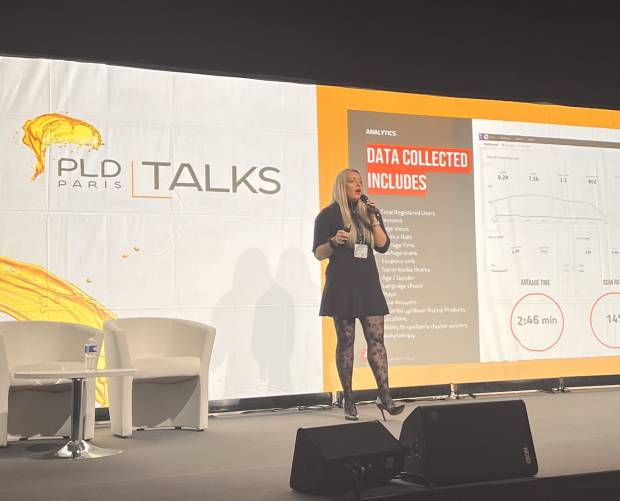Stacy Fassberg, VP Marketing at AxisMobile, outlines the unlikely connection between mobile email and chocolate Network operators are facing unexpected challenges in convincing consumers to use mobile email services. Email is a killer application on the PC; why isnt it taking off on the mobile? Thankfully, when it comes to marketing mobile email, telco marketing veterans need not look far to find market-proven strategies. In fact, you only need to look as far as your kitchen cupboard for the answers. Long before anyone ever heard of ARPU, ROI, or any other telecommunications buzzword-du-jour candy companies were selling to vast segments of humanity. Their key to success, beyond quality products and intelligent pricing? Effectively segmenting the market - creating products for everyone, and (especially) anyone.
Case in point M&M Candies
For over five decades, Mars Incorporated has produced its core M&M product candy-covered chocolate bits. Since their introduction in the 1940's, M&Ms in their traditional brown-envelope package achieved near-universal brand recognition worldwide.
But Mars didn't stop there.
Recognizing as all good consumer marketers do that not everyone likes the same thing, Mars started offering different types of M&Ms, in different types of packages. They made sure that chocolate lovers could find the right version of M&Ms to satisfy their taste buds. First peanut, then crispy, dark chocolate, medium, mega, minithe list goes on. And what this candy manufacturer succeeded in doing was significantly growing sales by approaching different market segments with the product best suited to each segment's characteristics. The end result M&Ms today generates an estimated $3 billion (1.5 billion) yearly for Mars.
And Mars was not the only one that discovered this little secret. From dishwashing soap, through diapers, fast food, and tires the marketing strategy of almost every consumer item in the Western world today relies on segmentation.
It's Called Long Tail Marketing.
In his groundbreaking 2006 book, The Long Tail, Chris Anderson concludes that the era of the blockbuster is over. The critical mass of consumer agreement needed to create a hands-down, over-the-top success story in almost any industry is simply not there, he claims.
The reason? Not lack of consumers, of course. Nor lack of buying power. What brought about the extinction of the blockbuster is simply this: consumer interest, claims Anderson, is "scattered to the winds as markets fragment into countless niches."
The lesson to be learned from this? Today's consumer knows what he or she wants, and is used to getting exactly that. Why compromise when choice is endless? The result for marketers is that today's products and services must be conceived and rolled out with an understanding that the critical mass of sales will come from the product's long tail, not its head. That is, sales will come not from the core product or service itself, but from the multiple, highly-targeted niche offerings based on that core.
For example, if we introduce a revolutionary new laundry soap, the bulk of sales will come not from sales of Acme Laundry Soap even if it's the best soap in the galaxy. Revenues will come from sales of Acme Laundry Soap for Sensitive Skin, Acme Laundry Soap for Summer Clothes, or (even more likely) Acme Laundry Soap for the Jeans that Your Mother Threatens to Throw Out if They Don't Come Clean in the Next Wash.
How does this affect the mobile arena?
As we've all experienced, the marketing of mobile value-added services has undergone dramatic changes in the past several years. In the beginning, services were new, novel, untested, and fresh. Providers would throw out a fresh piece of technology bait into teaming subscriber waters, and hope that enough sharks would find it in order to deliver ROI.
Then, things got more complex.
Like any market, our market matured. Simply throwing out cool services was no longer sufficient to guarantee revenues. From voice to data services and pricing became more focused, more tailored, more segment-specific.
How specific is specific? Not specific enough, in this writer's humble opinion. Despite the fact that mobile operators are literally in the pockets and purses of millions of subscribers worldwide, today's segmentation is still based on generally-defined, high-level groupings: SOHO, SME, Corporate, Road Warrior, and others.
The information is out there, and relatively accessible so why aren't we using it yet?
The Long Tail of mobile email
An excellent case for Long Tail marketing can be made in one of today's hottest, up-and-coming killer apps mobile email. Even though worldwide email volume continues to grow dramatically, and consumer interest in mobile email increases we still havent reached the critical mass of consumer mobile email users that operators expect. Business and corporate users and early adopters are getting on board, but where is the rest of the subscriber base?
It's no longer a technical issue. Providers are starting to adopt mobile email solutions that allow them to overcome remaining technical hurdles. However, even when mobile email is as simple as voice - it still won't become the smash hit we expect it to be.
Mobile email is like chocolate. It answers our basic craving to be close to others in a depersonalised, geographically distant world but (unlike MMS, for example) it leverages a familiar medium - email. Everyone loves their email today from grandmothers to grade-schoolers. But, just like M&Ms, everybody likes their email a little different some like dark chocolate, some like peanut, some need to have urgent business messages pushed to their 3G handsets, and some just need to see low-res JPEGs of the grandkids.
The conclusion to sell more mobile email usage, we need to sell the right flavor, in the right package, to the right person.
Segment profiles the answer is out there
Effective, granular segmentation of your subscriber base is not as threatening or even complex as it sounds. Neither is tailoring the right mobile email package to a given segment. By way of example, let's take a look at one common segment that most providers serve, but to whom few specifically target services Young Parents.
The Segment: Today's 30-45 year old parents are very busy people. With both parents working, or one parent out of the picture in a single parent scenario, after school hours are complex and hectic, and coordination of extracurricular activities is often done via email. Many parents even have a dedicated email account for child-related messages. At the same time, these parents are dedicated professionals, and need to get work email after hours, even when they can't access their laptop (like at a birthday party.)
The Offering: Create a package, appropriately named (MobileParent Plus or SuperMom/SuperDad Mobile) that offers this segment access to multiple email accounts (work and personal), one-click access to Inbox (for hands often busy doing three things at once) and optional text-to-speech for listening to email while driving. Add in PIM scheduling (preferably remote Outlook synchronization), and support for common home/office attachments (Word, JPEG, etc.). Offer free pre-configuration, optional handset bundle, and attractive data transfer rates during after-school hours.
This is, of course, just one example. There are countless segments out there just waiting for the right mobile email offer.
The moral of the story
If we agree that mobile email can be the next killer app, but that tomorrow's killer app will only come about as a result of successful niche penetration then it naturally follows that niche marketing is the way to ramp up mobile email usage.
Just like M&Ms, service providers should be looking at packaging and flavors choosing several segments and testing the waters with carefully tailored mobile email packages. Segment-specific offerings should strive to make subscribers' lives and decision making as easy as possible.
The Long Tail of niche-specific mobile email offerings has unlimited revenue potential, because subdivisions can always be further subdivided. The Young Parent segment can be subdivided into Moms (new recipes pushed via email based on pre-defined preferences) and Dads (sports updates pushed to handset), and each of these even further subdivided.
As Forest Mars Sr. showed us over 50 years ago (long before anyone ever dreamed of cell phones) find the right combination of packaging and flavors, add in an understanding of human nature, and you can create something that everyone will love.
.png)






